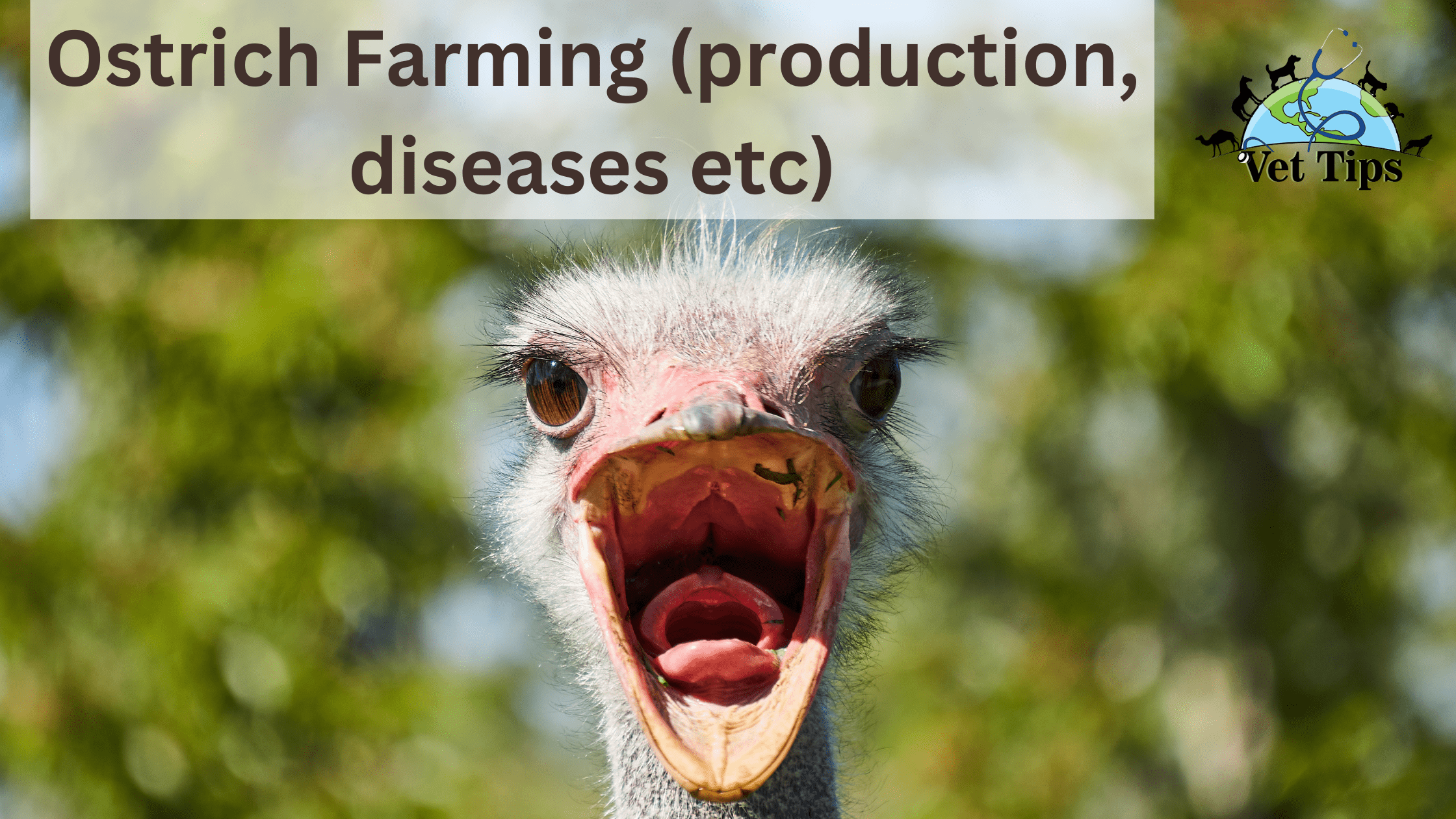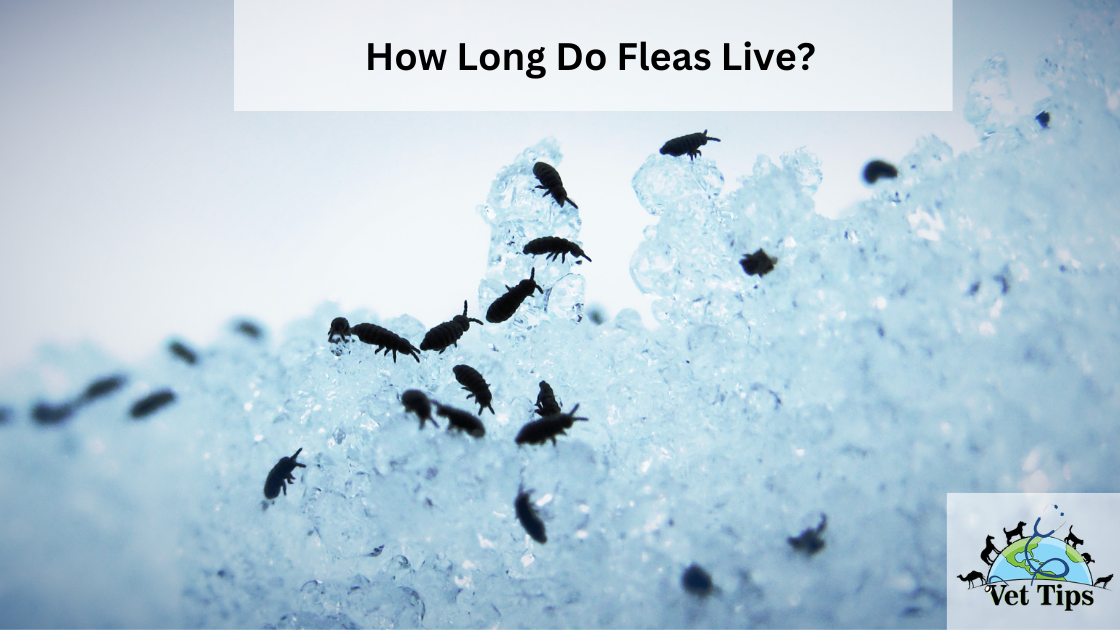Ostrich is a magnificent bird. Due to its large legs, it can’t fly its scientific name is Struthio camelus. It is mostly present in a tropical environment. The optimal temperature for an ostrich is 53 C, which is very high. In this post, we will discuss everything about Ostrich Farming (production, diseases, etc.). We also discuss every flaw and minute detail of Ostrich farming, production, reproduction, growth, diseases, environment, etc
Overview
Ostrich is the Worlds largest bird.
- Adult males 2.4 m tall and weigh over 100 kg
- Female is slightly smaller than male
- Flightless ( Great body & reduced wing size )
Ostrich Meat Breakdown
| Per 100 g of raw meat | Ostrich | Beef | Chicken |
| Protein (g) | 21.9 | 20 | 21.4 |
| Fat (g) | 1 | 15.6 | 2.6 |
| Cholesterol (mg) | 63 | 86 | 74 |
| Energy (cal) | 114 | 276 | 163 |
| Calcium (mg) | 5.2 | 9 | 13 |
Ostrich terminologies
- Adult male – Co*k
- Adult female – Hen
- Chick – Juvenile
History
- They were hunted for flesh & plumes.
- Semi domesticated by early Egyptians, Greeks & Romans.
- Specie name Struthio camelus.
- Word Camelus indicate similarities with a camel (prominent eyes & eyelashes, large body size & high tolerance to desert conditions).
Commercial Ostrich Farming is Most Profitable Business Opportunity.
- First commercial farm in South Africa in 1860
- In 1913 ostrich no. raised to 1 million.
- First & second world war diminished ostrich farming.
- In 1986 South Africa exported 90,000 ostrich hides to the USA.
- Due to increased demand for ostrich products, Europe & the USA started ostrich farming.
Characteristics & Behaviour
- More adapted to desert conditions.
- Wings act as insulators.
- Urine contains uric acid in a mucous-like substance that helps to minimize water loss.
- Complete diurnal ( Day time active ).
- Juvenile is gregarious & adults are semi-gregarious.
Sexual Characteristics
- Wild ostrich mature at 4-5 years of age.
- Ostrich was domesticated 2-3 years of age.
- Females mature slightly earlier than males.
- Males have black & white plumage, while females have dull colors.
- Sex identification by examining their sexual organs.
- Full sex distinction at two years of age.
Ostrich Farming (production, diseases, etc.).. Cont.
Ostrich Breeding
- Seasonal breeders.
- Breed in 6-8 months every year.
- Males are polygamous.
- Wild co*k nest with one or two or more.
- Domesticated ostrich kept in pairs & trios.
- Hen lay eggs in clutches of 20-24 eggs.
- Rest for 7-10 days.
Ostrich products
- Eggs
- Feathers
- Meat
- Hides
Ostrich Eggs
- The giant egg in the world.
- Length 17-19 cm
- Width 14-15 cm
- Weight 1900 g
- Egg 1 % of hens body wt.
Ostrich Feathers
Used for:
- Cleaning fine machinery.
- Fashion industry.
Ostrich Meat
- Red meat.
- Similar in taste and texture to veal & beef.
- High in protein & low in fat.
Ostrich Hide
- They are considered the most luxurious leather.
- Thick, durable & soft.
- They are used for shoes, bags, purses & jackets.
Comparison with other livestock
- Comparison of some parameters of ostrich & cattle.
| Ostrich | Cattle | |
| Gestation/Incubation period (Days) | 42 | 280 |
| Offspring per year | 40 | 1 |
| The period from conception to slaughter (days) | 407 | 645 |
| Meat (Kg) | 1800 | 250 |
| Leather (m²) | 50.4 | 2.7 |
| Feathers (Kg) | 36 | ———— |
Ostrich the Future of World
- Agriculture is the next Business.
- Supporting policies
- Alternative Livestock species
- Ostrich can feed the world

Ostrich can feed the world
- Best FCR
- Healthy and organic meat
- Rapid Multiplication
- 40 chicks/hen/year
- Highly Profitable Business
- More profitable than cattle, goat, and poultry
Why Ostrich Farming in Hot climate regions?
- Adaptability to Environment
- Livestock
- Meat as Prime Food Source
- Low feed cost
- Alfalfa available easily
Uses:
- Little or no handling
- Feed to Weight Ratio
- Product Variety
- Leather Industry
- High Profitability
- Success in the entire world
Awareness Program should be conducted to enhance ostrich farming in India, Pakistan, etc. which include:
- Exhibitions
- Print and Electronic Media
- Meetings and visits all over Pakistan
- Seminars
- Web
- Talk shows
Tell us in the comments how you like our article “Ostrich Farming (production, diseases, etc.)”
For similar posts like this click here
For source file click here









One thought on “Ostrich Farming (production, diseases, etc.)”